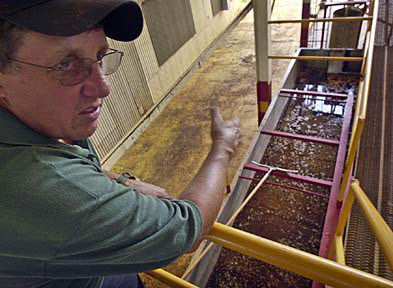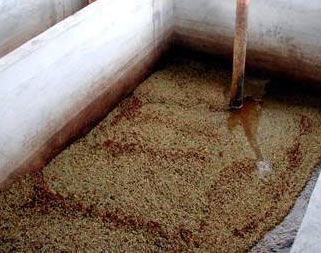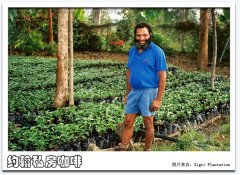Analysis of the process and steps of Coffee washing process
After harvesting, coffee beans must be immediately processed, otherwise they will start to ferment and cause coffee beans to produce odors. There are two methods of treatment,"sun method" and "washing method", which will cause different flavors. The beans of solarization method have complete natural mellow flavor, gentle aroma and more colloid; washing method has good mellow flavor, high aroma and lively acidity.
Alcoholic flavor is an important condition for espresso coffee, which will produce a strong alcohol and smooth feeling like wine. Espresso lovers can increase the amount of sun-dried beans; washed beans are clean as clear wind chimes, because they have less miscellaneous flavor. In addition, washed beans have a good sour taste and are the main source of sweetness in espresso coffee.

Water washing method:
1. Bean selection:
Place the harvested fruit in a tank of water and soak for about 24 hours. The ripe fruit will sink, while the immature and overripe fruit will float up and can be culled.
2. Remove the flesh:
A machine is used to remove the peel and pulp, leaving only the coffee beans wrapped in the endocarp. At this time, there is a layer of mucous membrane on the outside of the beans, and the washing process is to wash this layer of mucous membrane.
3. Fermentation:

Mucous adhesion is very strong, and not easy to remove, must be placed in the tank about 18-36 hours, so that its alcohol, and decomposition of the mucosa. There are two methods of fermentation, wet and dry, as the name suggests, the former with water, the latter without water. During the alcoholization process, the seeds and internal pulp undergo special changes, which is one of the most important steps in the washing method to affect coffee flavor. Some farms add hot water or alcohol to speed up the process, which negatively affects quality and is not popular with specialty coffee lovers.
4. Washing:
Farms that use water washing must build water washing tanks and be able to introduce a continuous flow of fresh water. When processing, it is to put the beans into the pool, move back and forth, and use the friction of beans and the power of running water to wash the coffee beans to smooth and clean.
5. Drying:
After washing, coffee beans are still wrapped in the endocarp at a moisture content of 50%, and must be dried to reduce the moisture content to 12%, otherwise they will continue to mellow and rot. The better treatment is to use sunlight drying, although it takes 1 - 3 weeks, but the flavor is excellent and quite popular. In addition, some places use machine drying, which greatly shortens the processing time and makes the flavor inferior to sun-dried coffee.
6. Shelling:
The dried beans can then be stored in a warehouse or sent to a factory for shelling, removing the endocarp and silver coating.
7. Selection and classification:
Like sun-cured coffee, washed coffee is sifted and graded to remove defective beans and ensure better quality before being sold to exporters around the world.
Important Notice :
前街咖啡 FrontStreet Coffee has moved to new addredd:
FrontStreet Coffee Address: 315,Donghua East Road,GuangZhou
Tel:020 38364473
- Prev

Washed coffee in Sigri boutique coffee bean farm
Having nothing to do, I was looking for some information about Sigri farm coffee in Papua New Guinea. I found these photos and information on the Gimmetries Coffee website. Sigri Plantation is located in the Papua New Guinea highlands. Growing conditions here are well-suited for coffee: about 5200 feet above
- Next

Steps of Coffee Solar method Analysis of Coffee Bean processing
The coffee beans after harvest must enter the treatment program immediately, otherwise they will begin to ferment, making the coffee beans have a bad smell. There are two methods of treatment: solarization and water washing, which will cause different flavors. Sun-dried beans have a complete natural mellow flavor, gentle aroma and more gum; washing rules have a good mellow taste, high aroma and lively sour taste. The mellow taste is
Related
- What is the meaning of lactic acid fermentation with coffee bean treatment?
- How to judge the state of foam by sound?
- How does the latte pull out the unicorn pattern? Come to get for a little trick to improve the flower pull!
- Will flower pulling affect the taste of the latte?
- Do you know the history of coffee?
- The difference between honey treatment and sun washing what is raisin honey treatment?
- What kind of milk can a novice use to make coffee foam to keep the foam longer? The correct method and skills of milking tutorial sharing
- Why do washed coffee beans taste sour? Flavor characteristics of washed Coffee
- Introduction to the skill of how to practice the size and height of water injection around the circle of hand-brewed coffee
- How do beginners practice coffee flower drawing from scratch?

